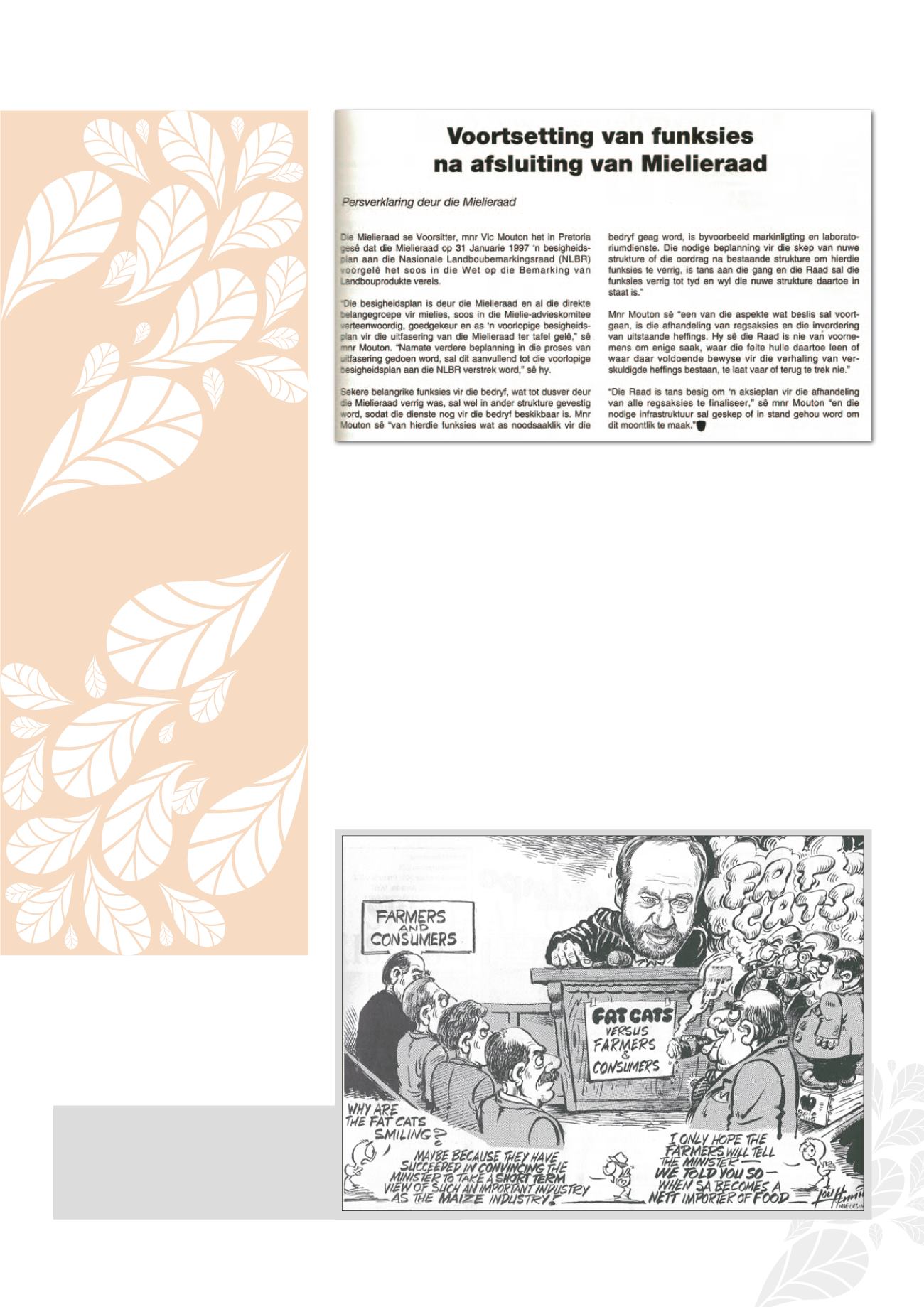

ႃႅ
CHAPTER 3
councils disappeared. They were therefore forced to change their business ap-
proach by becoming more marketing oriented, which had an enormous effect on
the relationship between the agricultural co-operatives and the grain producers.
Many of the larger co-operatives in particular were converted into companies,
with the producers as shareholders. The position of the producers therefore
changed from a member of the co-operative to an investor who was a client at
the same time. In an environment where the producers were no longer bound
to the co-operatives for the biggest part of their business, they also had to start
making decisions on the basis of sound business principles and not pure loyalty.
Likewise, milling companies used the opportunity to consolidate their positions and
expand their interests, as the restrictions that had applied during the existence of the
control boards were scrapped. The restrictions and control over the registration of
bakers in the bread chain were ended, so that the millers entered that industry too
on a large scale.
Although some 99 new mills had been erected since the abolition of the control
boards until 1999, 33 of them still produced about 97% of the country’s wheat meal.
Press release by the Maize Board, March 1997.
NAMPO openly blew the whistle about the
maize buyers and processors, or rather the
“fat cats” that were unilaterally favoured
by the decision of the Maize Advisory Com-
mittee concerning the future of maize mar-
keting.
LOCATION DIFFERENTIAL
A MAJOR POINT OF
DISCUSSION
The Safex location differential is a
major point of discussion amongst
grain producers, because there are
different opinions on the phasing out
or retention thereof. It is therefore no
surprise that it was on the agenda of
more than one Grain SA Congress
and the various Breakaway Sessions
during Congress.
Although it was decided during
Congress not to phase out the location
differential, it became clear at the
Congress of 2014 that there was not
consensus amongst all producers
on the phasing out of the location
differential. Following a decision by
producers, the Executive was tasked
to determine the impact of the location
differential on the grain industry and
make recommendations thereon to
Congress 2015 for consideration.
Despite requests by Grain SA the
JSE eventually decided not to phase
out the system, because the location
differential forms part of Safex’s
business model. The 2015 Congress
took note and recommended that
cash markets be developed further
and managed more transparently.
Grain SA was also tasked to go on
monitoring the fair calculation of the
location differential by the JSE and,
where necessary, contact the JSE
for the recalculation thereof. The
organisation takes active part in and
gives input on the calculation of the
differential for the new marketing
season before it is announced by
the JSE.
















